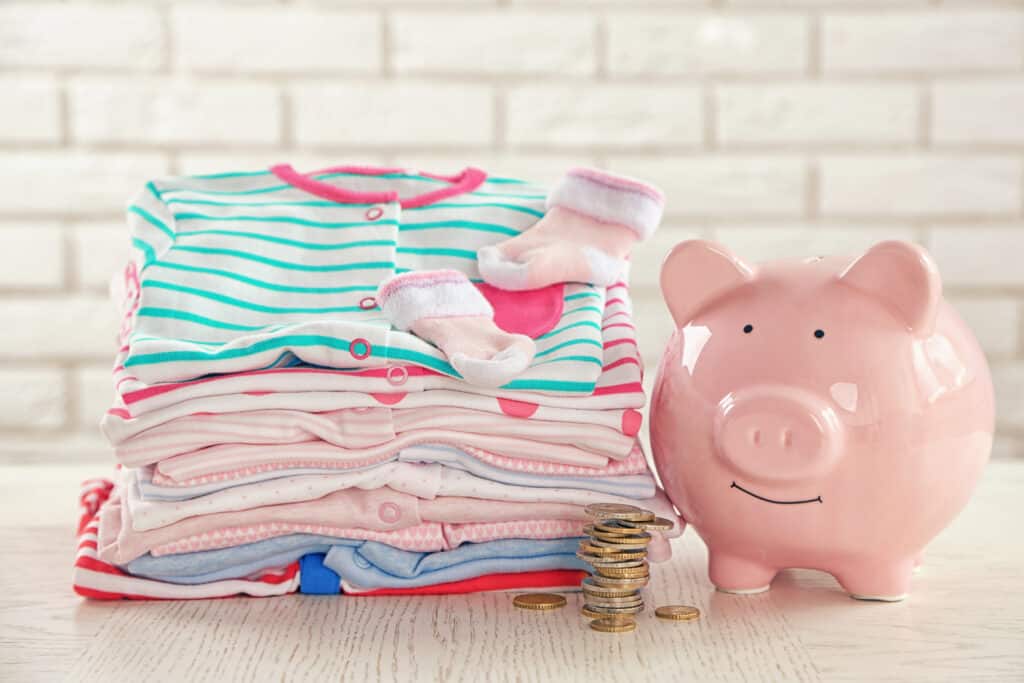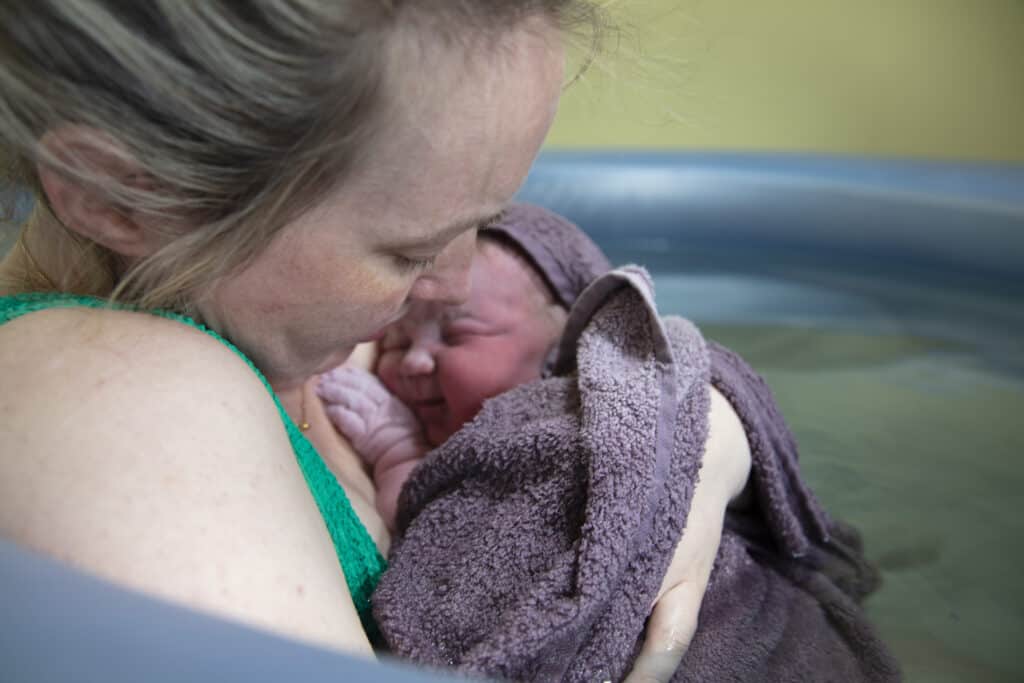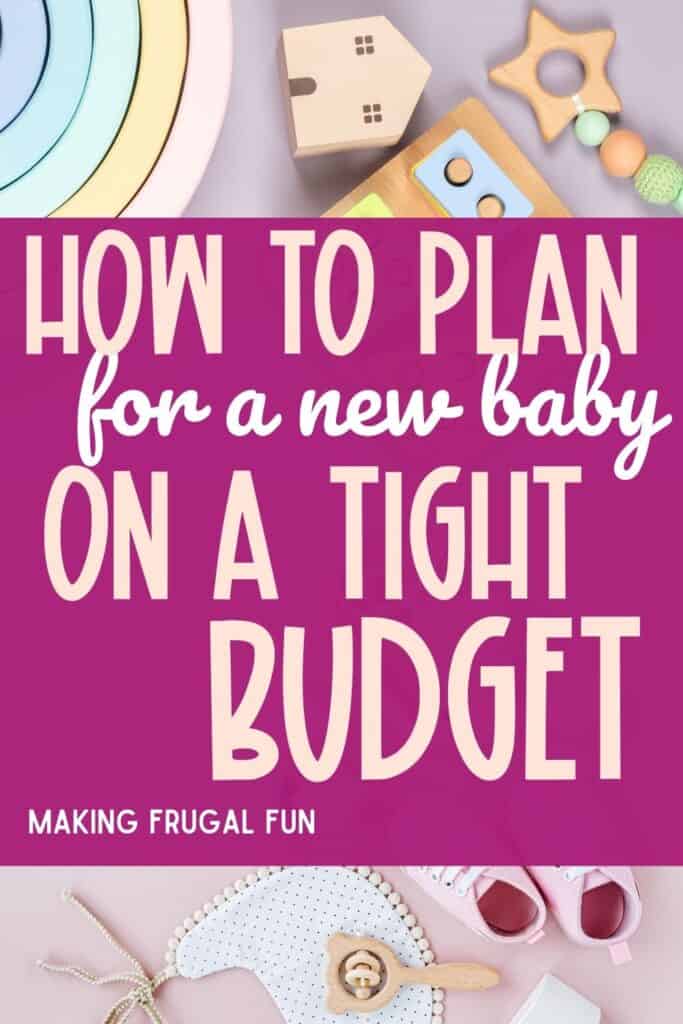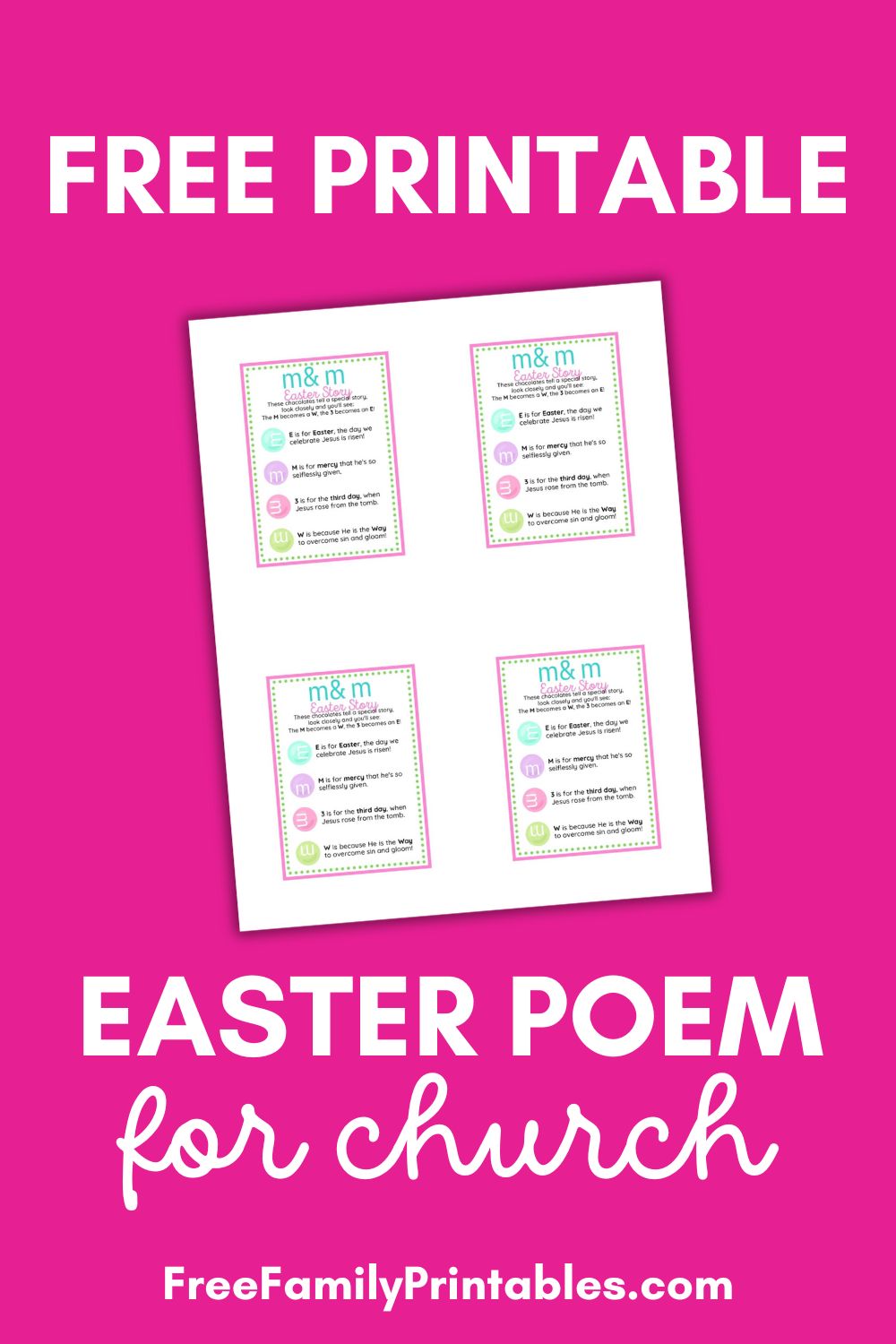You might think it’s impossible to afford a baby on a tight budget, but as long as you don’t go overboard on baby gear, and make sure to prepare ahead with research and a solid spending plan, there’s no need to wait to expand your family.

How to have a baby on a tight budget
If you’re currently living on a tight budget, you may think that expanding your family by having a baby is out of the question for many reasons. For instance, we all know babies are expensive, and there are plenty of doctor’s visits for both mom and baby. But I can assure you it’s not impossible to have a baby on a strict budget.
In this post, we will discuss ways to financially plan and budget for a baby, even if you are living on a limited income. There are many factors that go along with having a baby, and while it can be costly, there are many important things to know beforehand that will help prepare you and make this future family possible for you!
We will discuss the specific costs of everything from doctors’ visits to diapers and some ways to save extra money and budget for the occasions properly.

Is it possible to have a baby on a small budget?
If you budget properly and begin to direct your savings towards the costs of a new baby ahead of time, then it is certainly possible to have a baby while living on a small budget. The important part about budgeting for a new baby is not to completely overhaul the budgeting system that you have already set up, if that has been working for you. If the budgeting system you have in place has been working for you, and you have been able to stick to it, you should just make adjustments and concessions to that plan that is already in place.
A great way to do this is with a life and budget planner like this one. A planner like this lets you prepare for any new goal you want to accomplish, like having a baby! This means you can add a new savings goal specifically for the baby and the costs that will come with that, and adjust your current budget with this template as well. It also has an expense tracker, which means you can go through your expenses more easily since you are likely already tracking them with your current plan.
You will have to cut out some more expenses than you may want to at this stage, but it is important that you have enough of a cushion in your budget to prepare for whatever is necessary for the pregnancy and the baby.
Financial planning for baby: What to know before getting pregnant
The idea of starting a family is costly, but it doesn’t have to be the boogeyman of your budget! If you want to have a baby, then all you need is to plan accordingly, identify where you can save, and then implement your plan. Financial planning for a baby has a few different aspects of cost but first, let’s discuss the differences between having a baby at home versus at a hospital.

How much does it cost to have a baby at a hospital?
While we all know that the American healthcare system is a beast for those living on tight budgets, unfortunately, it is no different for those who are trying to have a baby. The average cost of just a vaginal delivery in the United States is 10,808 dollars. This price increases if you have to undergo a C-section, with the costs of that delivery varying between 7,500 to 14,500 dollars. These prices also increase if you are uninsured or underinsured through your current health plan. These prices are again raised if any other conditions are present such as diabetes or blood pressure issues, like preeclampsia for the mother, or issues for the baby such as low birth weight, jaundice, or any number of other things that cannot usually be controlled.
The only way to attempt to prepare for these costs is to go to regular prenatal appointments and follow the doctor’s recommendations. If your birth plan is one that includes a hospital visit, it is important to focus on your insurance as well. If you are uninsured, you should try to apply for low-cost or no-cost programs for those with low incomes. Options include types of Medicaid such as WIC and CHIP, which focus on pregnant mother and child care for women with low incomes.

There are also subsidies for the Affordable Care Act that you can apply for, which can come in at 0 dollars a month if you meet certain criteria. The good thing about the ACA plans is that, since the 2007 health care reform act, any plans that are ACA compliant have to cover pregnancy and maternity care. The requirements are that the ACA plans must cover maternity care, child delivery, and newborn care.
Even more, services must be included as preventative care which includes prenatal visits, health screenings for mom and baby, and breastfeeding counseling and services. Previously pregnant women could be denied healthcare coverage if they “had become pregnant” because it was listed as a pre-existing condition. Luckily that is no longer the case, so if you are starting to plan to have a baby. It is almost essential to look into the possible health insurance coverage options to help mediate the medical expenses that come with the delivery and the aftercare.
How much does it cost to have a baby at home?
There are many different aspects to consider when you are thinking about having your baby at home. These would include proper prenatal care and, the most expensive part, the presence of certified midwives. The American Academy of Pediatrics states that home births in America come at around two to three-fold more risk than that of a hospital birth.
The Academy also recommends that if you are following through with a home birth, you should have two care providers who are certified nurse midwives and one who is specifically certified in neonatal resuscitation.
This usually proves to be the costliest part of a home birth as these professionals’ charge rates anywhere between 3,000 to 9,000 dollars. If you add this in with the fact that only 21 states have Medicaid programs which cover home births, this may end up being more costly than it seems at first glance.

The increased risk for mother and baby if attempting a home birth, partnered with the fact that you may end up paying out of pocket for the costs themselves, makes this an option that needs more review on an individual basis. If you are attempting a home birth just to save money, you should thoroughly compare the costs covered by your insurance in both situations and assess any risks with your prenatal primary care physician.
If you are a low-risk pregnancy with a health insurance plan which covers the costs of a home birth, then this may be a cost-effective option for you, but you must remember to find qualified professional midwives who are certified to work in hospitals as well, so that should anything happen during the birth you and your baby will be in good hands.
How much should I save for the baby’s first year?
Many of the statistics and cost averages vary, but between 12,000 to 20,000 dollars is a safe estimate to have in the bank based on average childcare costs of the first year. The first year of the baby’s life is usually the most expensive because this factors in delivery room care and costs, along with any unexpected hospital costs and neonatal aftercare.
These costs also factor in large one-time purchases like a crib and other baby room supplies. This may seem like a crazy high amount to have in the bank if you are working with a low income and a tight budget but there are many ways to reduce the costs of some of these big-ticket items. As we discussed previously, the biggest cost of the baby’s first year will come from delivery room fees and vary widely depending on each person’s insurance and situation.
It is important if you don’t have the time or means to save this amount of money for the first year that you look into the insurance options above to alleviate the cost burden of many of the delivery and post delivery neonatal care that will be required. Other ways to reduce the cost include shopping second hand or receiving hand me down baby items from family members. If you know you had a cousin or a friend who had a baby then it is a great idea to ask if they no longer need some first-year items like baby clothes or a small crib. If they are willing to part with them, it clears out their house and saves you a lot of money.

Similarly, you can shop at Goodwill or other second-hand stores which could carry gently used cribs and other baby furniture as well. Saving money on these items will significantly lessen the financial burden in comparison to buying brand new baby cribs, which you will eventually have to trade in for a child’s bed anyway. Another thing to remember is that if you have a wide circle of friends and family, then someone will likely be throwing you a baby shower.
A baby shower is a perfect opportunity to ask for many essentials and bigger one-time purchases like strollers or car seats. While many of us don’t have families who can spend thousands on our babies, the baby shower will at least let you get some essential items and significantly cut the costs of those dreaded first year expenses. If you don’t have a reliable circle that is willing to throw a baby shower for you, you can always check out your local community.
Some centers and food banks also have donations of baby clothes and other essentials like formula and diapers on occasion. So, it is worth it to connect to the local community, churches, or salvation army locations to see if there are any ways to acquire baby necessities at a free or low-cost price point. Keep reading to find out how to cut costs in specific areas and learn some tips for budgeting with a baby!
How much does a baby cost per month?
Since we already talked about the costs for the baby’s first year, let’s talk about the average monthly costs for taking care of your baby. It is no secret that babies are expensive, but there are several ways for those living on a tight budget to continue to take care of their new child without going into debt.
The average monthly costs of a baby can vary widely depending on many different factors, but the most common average shown is between 300 and 2,000 dollars. These expenses vary as your child gets older and also vary with choices that you make as a parent. For example, baby formula is one of the more expensive necessity items you will have to buy for your baby, which will vary from 68 to 243 dollars a month.
This is a cost that you can completely cut out if you choose to breastfeed your baby. Breastfeeding is overall cheaper than buying formula, even though you may need to buy a breast pump and bottles still. Overall, if breastfeeding is an option for you, then it is a great way to cut costs and has been shown to increase positive connections between mother and baby. Another way to cut down on monthly costs is to utilize cloth diapers rather than store bought disposable diapers.

These cloth diapers will have to be washed by you but will end up cutting the costs of constantly buying disposable diapers until your child is potty trained. This means you will only have to buy enough cloth diapers to rotate through the week and as your child grows. This has the added benefit of reducing your waste as well as the diapers will be reused. There are many other ways to allocate funds to your new budget and to work around the necessities you have to purchase with the new addition to the family.
If you are wanting to reallocate your budget around the new baby then you can find helpful budgeting advice here. This post will help you to get the most out of your budget, even if you are on a low-income. That post does not include specific baby expenses, but you can use the knowledge of your essential costs from this post and apply that to the budget outline in that article. This way, you come away with a budget optimized for you and your family.
Grab my free budget planner so you can start cutting expenses now and staying organized!
What Expenses You Need To Plan For When Having a Baby On A Budget
Doctor Bills For Mom & Baby
As we have discussed in this post already, one of the biggest expenses you will have to face with a baby are doctor visits and hospital bills. From prenatal appointments, delivery room fees, immunizations, and the occasional fever you will spend a lot of time and money with your doctors. Care for your baby and mommy is of the utmost importance, especially in the first year where a lot of the costs will come from.
As we said before, looking into the resources of different insurance companies and what they cover will be necessary to help cut the costs. There are many other ways to cut costs with first year doctor’s visits other than insurance, though, and they have to do with good prenatal planning. You want to make sure you are following the advice of your physician closely and making sure to ask plenty of questions. You want to be able to budget and prepare for any risks.
By this, I mean if you have a history of diabetes, preeclampsia, or anemia, you want to make sure you are taking the proper prenatal vitamins and following advice to avoid any complications with the delivery. Speaking of prenatal vitamins, your doctor will often prescribe a specific type of vitamin depending on your situation, but these can be expensive. If this is a concern, you should speak to your doctor and help find a happy medium that covers all of your concerns while taking into account what you or your insurance can cover.

Maternity Leave
Maternity leave is less of a cost per se, and more of a loss of income. You want to make sure during your pre pregnancy planning that you find out all of the information you can from your company’s human resources department about their maternity leave policies. You want to note how long you are allowed to take off, if at all. In some cases, jobs will not cover any maternity leave, and you have to request time off, it is important to note this as well.
Once you know how long you are allowed to take off, it is important to ask if you will be paid a portion during this time or if you will be taking unpaid time off for your maternity leave. Discussing the specifics with your HR representative will allow you to prepare for how long you have before and after your baby is born, and when you will be scheduled to go back to work.
Diapers/Necessities
Diapers, formula, baby food, clothes, and many other items are necessary for your baby and have to be bought consistently. As we discussed above, the best ways to cut costs in these areas are to try and find help from the local community with food drives and from Goodwill donations of baby clothes. You can also ask around in your circle of family and friends to see if anyone is looking to give away items from their children that they don’t use anymore.
Breastfeeding and the use of cloth diapers are a great way to cut waste and cut costs for your baby expenses, as formula and disposable diapers become the largest costs for your monthly expenses. If you are unable to cut costs with those methods, it is worth it to look into the previously mentioned WIC program for mothers and children, and to see if you are eligible for SNAP, or food stamps.
While diapers cannot be bought with WIC or SNAP, there are many places that offer assistance. I suggest checking out the National Diaper Bank Network, to see if there are locations in your community that can offer assistance.

Childcare
Childcare is another expense that you must think about, especially if you work full-time and are not being paid while on maternity leave. The continued loss of income can be detrimental and may require you to get back to work as soon as possible, depending on your situation. A tried-and-true method of cheap childcare is to ask immediate family members if they have the ability to watch your child during work hours. Sometimes grandparents live close by, and it is easy to have your baby dropped off or picked up.
However, this option is not viable to everyone, so other choices may lie with your workplace. It is worth a shot to discuss with your HR representative if they cover childcare or have childcare programs for working mothers. This may be a rarity, but some corporate offices do offer a semblance of these services.
Furniture and Car Safety
Baby furniture and one-time essential purchases can cost a lot, but the lucky part is for most of these you will only need to buy the item one time. As we mentioned, with baby clothes, buying or inheriting items second hand, is the best way to get these items. Goodwill, Facebook marketplace, eBay, and even Craigslist may have good deals for some of these items.
These items are usually only used during a certain short time in the baby’s life, so the items are usually kept in good condition. Buying second hand, having a baby shower, and asking around your circle of family or your local community are great ways to cut these costs.

Having a baby on a tight budget is doable, especially when you plan ahead!

Leave a Reply






thanks for info